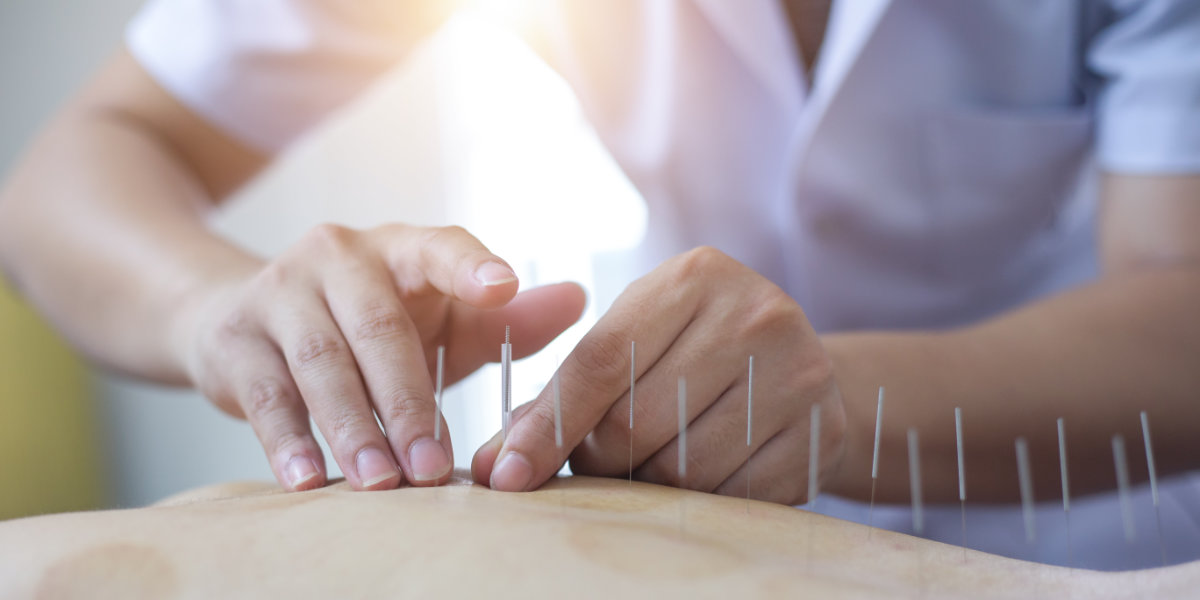Acupuncture – An In-Depth Look
What is Acupuncture?
Acupuncture is an ancient form of Chinese medicine involving the insertion of very thin acupuncture needles into the skin at specific acupuncture points on the body to achieve a therapeutic effect.
According to traditional Chinese medical theory, acupuncture is based on the premise that there are patterns of energy flow (Qi) through the body that are essential for health (Nordqvist, C. 2016) (MedicineNet. 2016). Disease is believed to be caused by a disruption of this flow. Acupuncture has been theorized to correct imbalances of flow at identifiable acupuncture points where Qi can be accessed (Nordqvist, C. 2016) (MedicineNet. 2016). This correction is achieved when appropriate combinations of needles are inserted (Nordqvist, C. 2016).
In Western societies, acupuncture is explained as the stimulation of anatomical locations (acupuncture points) via the insertion of solid, metallic needles, which are manipulated manually or by electrical stimulation to create a therapeutic effect (MedicineNet Inc. 2016.). Acupuncture points are seen as places where the neuroendocrine system can be stimulated and the body’s electromagnetic energy can be modulated (Smith. 1992).
What does science say about the effectiveness of Acupuncture?
Researchers are only beginning to understand the effects acupuncture has on the brain and body and how best to measure them (National Center for Complementary and Integrative Health. 2016).
However, studies performed in both animals and humans, have demonstrated that acupuncture can cause multiple biological responses locally (at or close to the site of application) or at a distance (MedicineNet Inc. 2016.). Considerable evidence supports the claim that the analgesic effects of acupuncture are at least partially explained by the release and actions of opioid peptides (MedicineNet Inc. 2016.) (Nordqvist, C. 2016). It has also been documented that acupuncture results in changes in the regulation of blood flow via the alteration in the secretion of neurotransmitters and neurohormones (MedicineNet Inc. 2016) (Nordqvist, C. 2016).
What are the benefits of Acupuncture?
Acupuncture is used to encourage natural healing, improve mood and energy, reduce or relieve pain and improve function of affected areas of the body. It is safe and effective and is often successfully used as an alternative to medications or even surgery.
Results from a number of studies suggest that acupuncture may help ease types of pain that are often chronic such as low-back pain, neck pain, and osteoarthritis/knee pain (National Center for Complementary and Integrative Health. 2016). It also may help reduce the frequency of tension headaches and prevent migraine headaches (National Center for Complementary and Integrative Health. 2016). Therefore, acupuncture appears to be a reasonable option for people with chronic pain to consider (National Center for Complementary and Integrative Health. 2016).
Sources
MedicineNet, Inc. (March 11, 2016). Acupuncture. MedicineNet.com. Retrieved from http://www.medicinenet.com/acupuncture/article.htm).
National Center for Complementary and Integrative Health. (December 2007). Acupuncture: In Depth. National Center for Complementary and Integrative Health. Retrieved from https://nccih.nih.gov/health/acupuncture/introduction.
Nordqvist, C. (February 17, 2016). Acupuncture: how does acupuncture work. MediLexicon International Limited. Retrieved from http://www.medicalnewstoday.com/articles/156488.php.
Smith, F.W. (1992). Neurophysiologic basis of acupuncture. Problems in Veterinary Medicine, 4, (1). Retrieved from http://europepmc.org/abstract/med/1349843).
